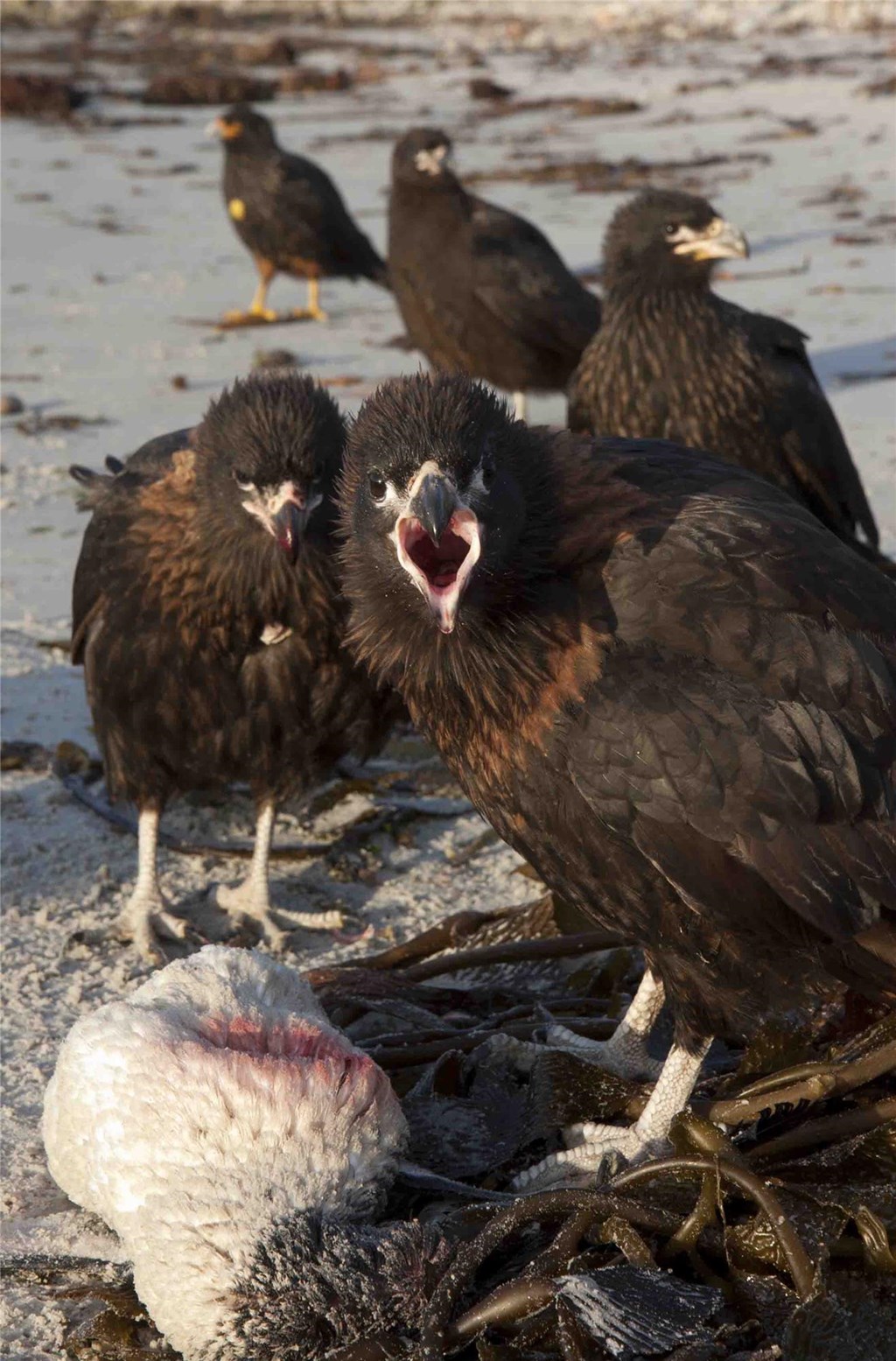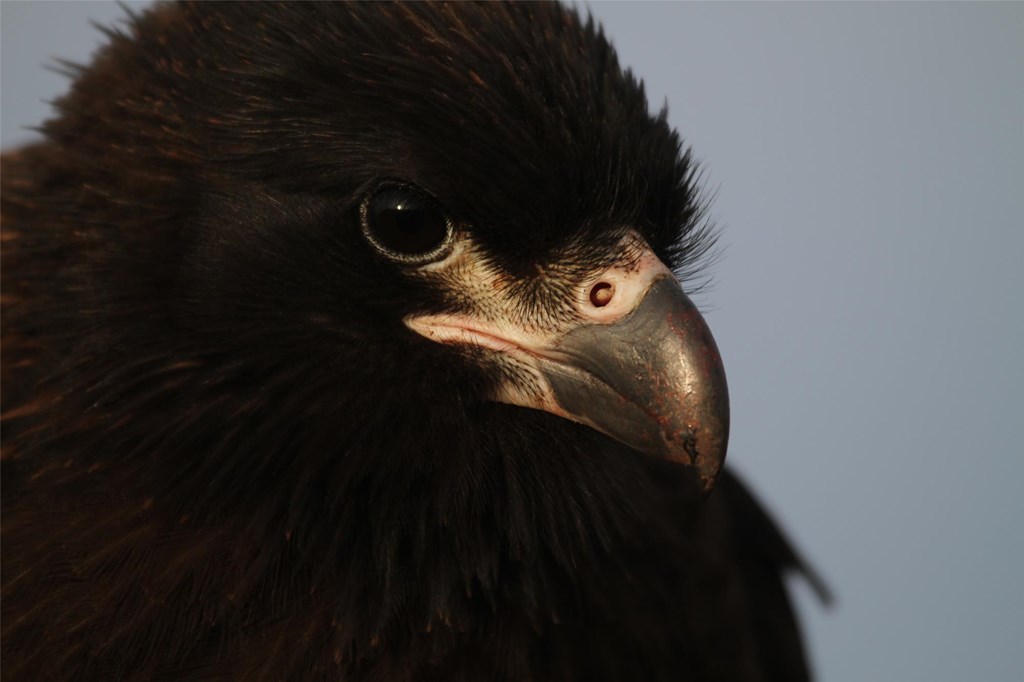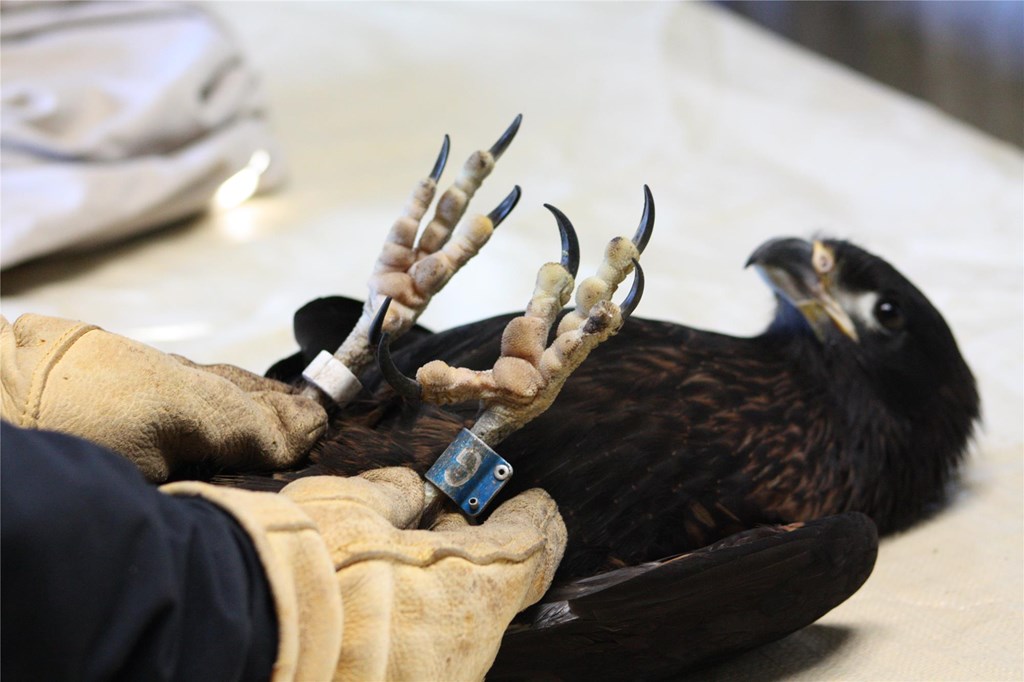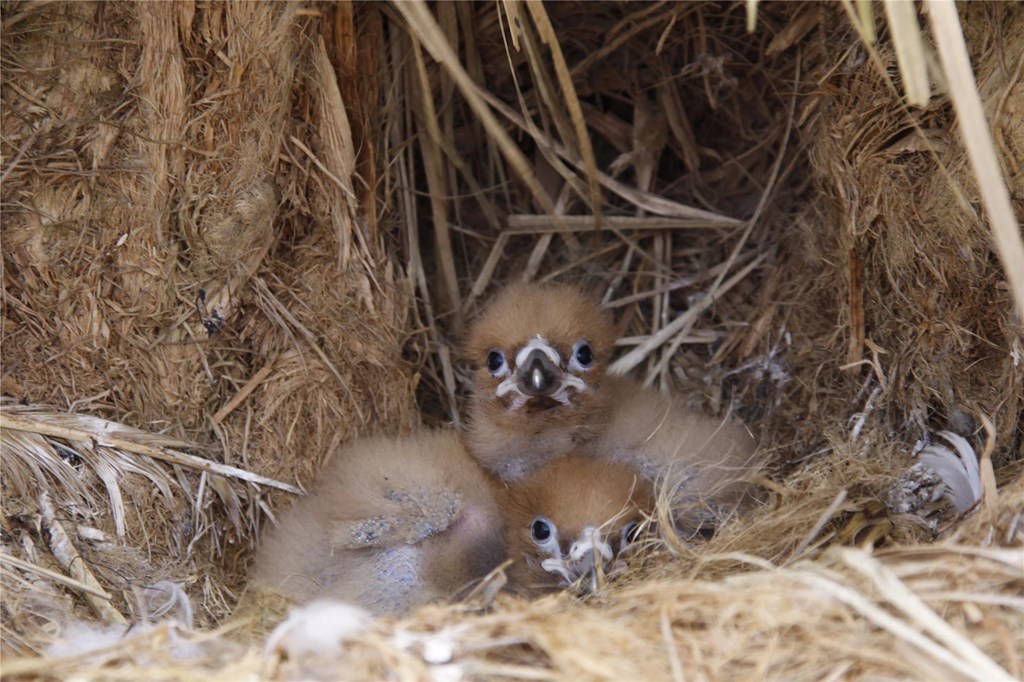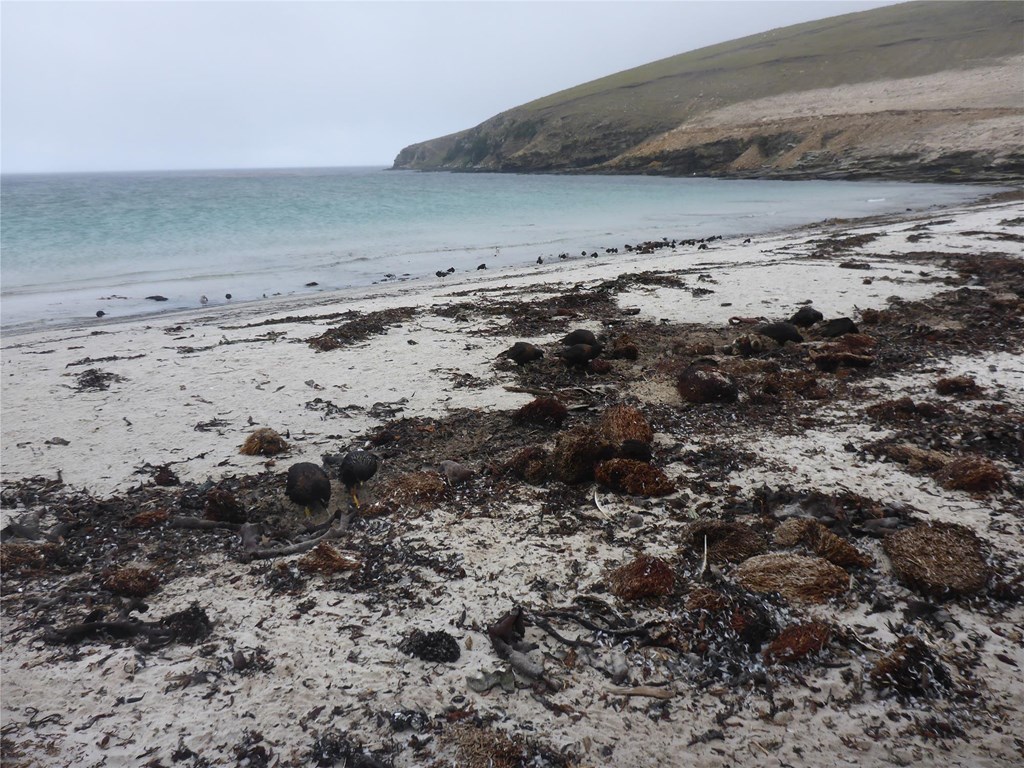Striated Caracaras

Striated caracaras are remarkable birds of prey by any measure—perhaps the most unusual birds we work with at Hawk Mountain. They live and breed only on remote, exposed islands at the southern tip of South America, including Cape Horn itself, where colonial seabirds including albatrosses, penguins and burrowing petrels form the major share of their diet; and though they’re part of the falcon family, they’re curious, scavenging generalists that often act more like supercharged ravens than solitary hunters like peregrines or kestrels. In captivity, striated caracaras are known for their fondness for social interaction and play, as well as their ability to solve complex puzzles; and their marked interest in novel objects even caught the eye of Charles Darwin, who called them “mischievous and inquisitive” and “tame and fearless.” Darwin noted that they were “exceedingly common” in the Falkland Islands during his visits aboard the Beagle in 1833-34, but absent on the South American mainland; and he wondered why “this bird, doubtless for some good reason, has chosen these islands for its metropolis.”
Today, however, striated caracaras’ situation in the Falklands metropolis is uncertain, and likely precarious. Sheep farming became the focus of the islands’ economy in the late 19th century, and a century of persecution by landowners who saw the birds as a threat to their livestock, combined with the introduction of invasive predators like cats and rats, appears to have reduced their range to a small fraction of its former size. The IUCN Red List estimates the world population of striated caracaras at 1,500 to 2,000 individuals—only twice the estimated population of giant pandas—and notes the urgent need for more research to understand and protect these unique birds of prey, the southernmost raptors in the world.
Falkland Island's Johnny Rooks Facebook Page
Published Paper on Movement Ecology
Seasonal micro-migration in a farm-island population of striated caracaras (Phalcoboenus australis) in the Falkland Islands, March 2018
DownloadPublished Paper on Predation of Southern Red Octopus
Predation of Southern Red Octopus (Enteroctopus Megalocyathus) by Striated Caracaras (Phalcoboenus Australis) in the Falkland Islands, May 2019
DownloadPublished Paper on Seasonal Activity Levels
Seasonal activity levels of a farm‑island population of striated caracaras (Phalcoboenus australis) in the Falkland Islands, 2020
DownloadCollaborative Work
Very little life history research has ever been dedicated to striated caracaras. Recognizing the need for a foundation of research on which landowners and officials in the Falklands can base conservation and management decisions, Hawk Mountain began the first-ever banding studies of striated caracaras in 2010 on Saunders Island in partnership with landowners David and Suzan Pole-Evans, which allowed us to track the movement, behavior, and survival of individual birds—and encouraged the participation of islanders in re-sighting and reporting on the birds’ movements.
Since then, we’ve expanded our banding efforts to include the nearby islands of Steeple Jason, New Island, Bleaker Island, and Carcass Island; and to date, we have banded over 1,600 birds. We’ve gathered and published some of the first systematic observations of striated caracaras’ diets, behavior, and population structure; and since 2013, donor support has allowed us to deploy six satellite telemetry units, which have begun to reveal the complex and surprising local migratory patterns of birds within the islands.
Our efforts in the Falklands are led by Katie Harrington, a former Hawk Mountain Conservation Trainee who began graduate research on striated caracaras in 2015 through Moss Landing Marine Laboratories (California State University). Along with overseeing and implementing the expansion of our banding and telemetry program and educational outreach to farmers and schoolchildren in the islands, Katie’s initial research has focused on striated caracaras’ seasonal movements, feeding ecology, and energy use. Katie is currently collaborating with researchers in mainland South America to study the population genetics of striated caracaras within and beyond the Falklands, and to support and encourage research into their little-known populations in Chilean and Argentine Tierra del Fuego.
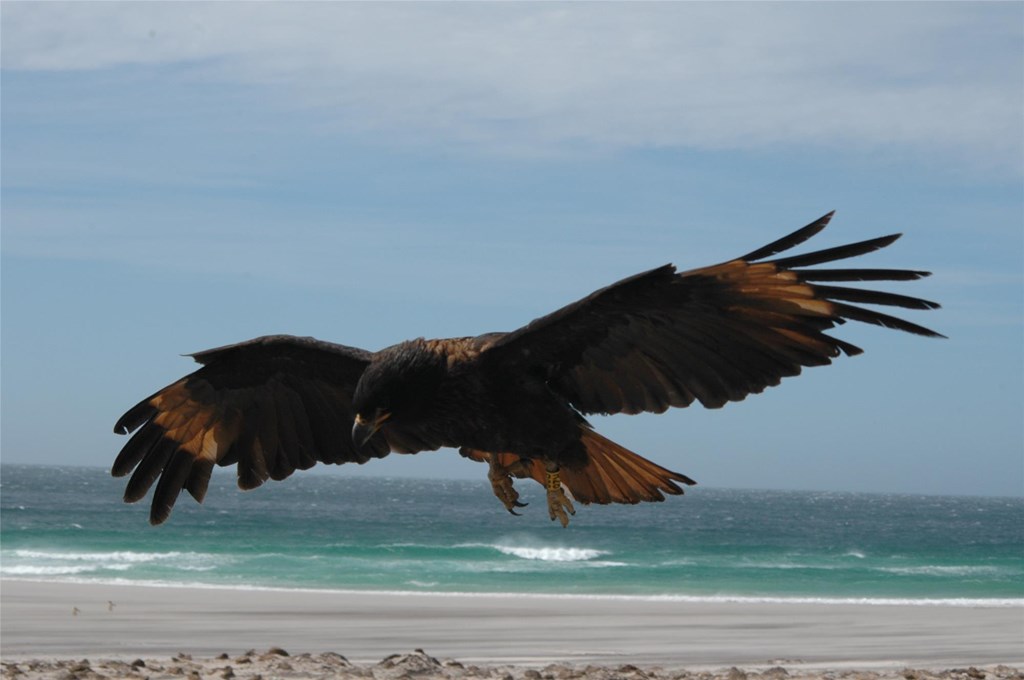
The Future
The next steps in this important work are to:
- Analyze population genetics of caracaras within and beyond the Falklands
- Assess feeding ecology during austral winter when food resources are limited
- Assess juvenile dispersal and measure annual survival rates
- Monitor the effects of rat eradication programs on striated caracara populations
- Continue to track seasonal movements to determine high priority islands for further conservation efforts
- Continue outreach to farmers, sharing knowledge and encouraging a positive image of caracaras as unique and special raptors
- Continue involving Falkland Islanders in research and monitoring
Support
We are thankful for the logistical and financial support we have received for this research from the following generous organizations and individuals:
- David and Suzan Pole-Evans
- The Darwin Initiative
- Falklands Conservation
- Falkland Islands Government
- The Hawk Conservancy Trust
- The John Cheek Trust
- Wildlife Conservation Society
- And many generous private donors
To help support this important research, please contact Director of Conservation Science Dr. Laurie Goodrich (570-943-3411 x106, [email protected]) or Research Associate Katie Harrington ([email protected]).
You can also donate today using the button below. Be sure to include in the comments of the form that the online gift is for striated caracara research.
